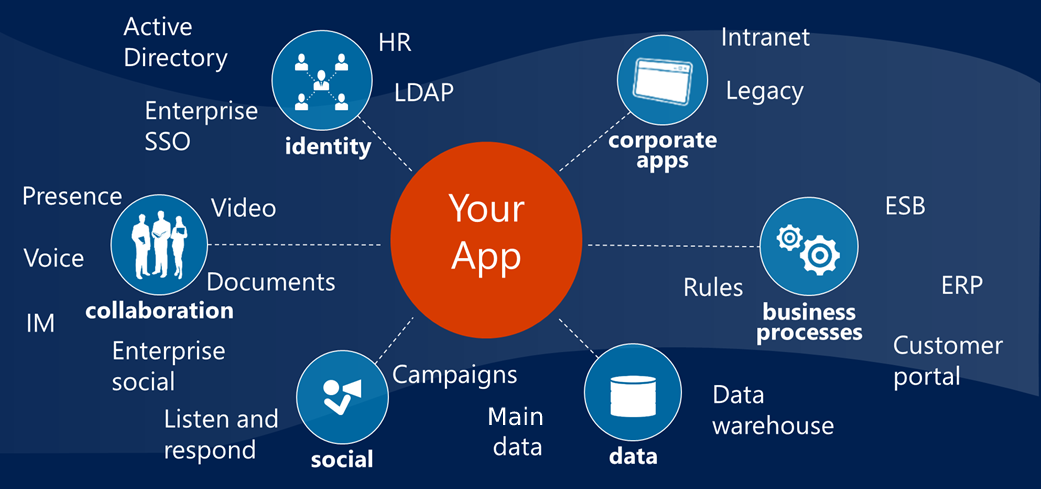Evaluate options
One of the strongest capabilities of Microsoft Power Platform is its versatility to integrate using hundreds of existing connectors, and the ability for implementation teams to make their own custom connectors. The functional consultant will often follow the lead of the solution architect and do that actual integration of the selected integrations and connections.
Integration is connecting of one or more parts/components of a system to create a more unified experience, or to ensure a more consistent outcome of a process. Integration allows leveraging of existing services (both internal and external) without having to rebuild or migrate existing functionality.
There are different types of integrations you will use on projects:
- Process integration: multiple disparate systems, and each of those systems is part of an overall business function.
- User interface integration: Visibility of data from one or more systems, without bringing rows of data into the system.
- Data integration: simply combining data from different sources and presenting the user a unified view.
Each integration should be evaluated to determine the best approach. When possible, if there is an out of the box integration that can be simply configured and connected, that could be the fastest path. When considering using the out of the box integrations, you should assess any limitations and ensure that they don't interfere with your requirements. For more complex needs, it's often best to look to see if any third-party providers offer a service that could be integrated before deciding to create your own. These providers often invest in robustness of service that if you were to create the integration yourself would be hard to obtain. These third-party solutions can often be integrated either by using their connector or by installing their AppSource offering. Finally, you can fall back to working with your developers to build anything custom to handle the most complex requirements that there isn't already an option available that meets your needs.
As a functional consultant you will frequently be involved in the evaluation or proof of concept of different approaches for integration. It's important to make sure that during these evaluations not only the happy path is evaluated but consideration is given to how the integration will handle the abnormal ones as well.
Your app(s) can be at the center of the overall solution. In order for that to be seamless for your users, proper integration is key.

The solution architect of the project will decide what integrations the project needs, but the functional consultant will not only support the integrations, but will likely configure it. In order to be successful at the integrations, there are some key features that you should know.